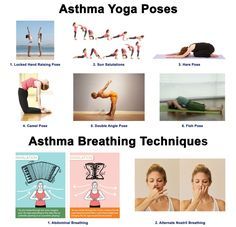Mindful breathing exercises for women with asthma

Asthma is a chronic respiratory condition that affects millions of people worldwide. While both men and women can suffer from asthma, studies have shown that women often face unique challenges in managing the condition. This article aims to explore the benefits of mindful breathing exercises specifically tailored for women with asthma, and how they can help improve their overall well-being and quality of life.
The Impact of Asthma on Women
Women with asthma often experience more severe symptoms compared to their male counterparts. Hormonal fluctuations during menstruation, pregnancy, and menopause can trigger asthma attacks or exacerbate existing symptoms. Additionally, women may face higher levels of stress and anxiety due to societal expectations, caregiving responsibilities, and other life challenges, which can further worsen their asthma symptoms.
The Power of Mindful Breathing
Mindful breathing exercises can be an effective complementary approach for women with asthma to manage their symptoms and improve their lung function. By focusing on their breath, women can increase their awareness of their body and enhance their ability to cope with asthma triggers and symptoms.
1. Diaphragmatic Breathing
Diaphragmatic breathing, also known as belly breathing, involves consciously engaging the diaphragm to take slow, deep breaths. This technique helps strengthen the diaphragm, the main muscle responsible for respiration, and increases the lung’s ability to fully expand. To practice diaphragmatic breathing:
Find a comfortable position, either sitting or lying down.
Place one hand on your chest and the other on your abdomen, just below your ribcage.
Inhale slowly through your nose, allowing your abdomen to rise as you fill your lungs with air. The hand on your chest should remain relatively still.
Exhale gently through your mouth, letting your abdomen contract as you release the air. Again, the hand on your chest should not move significantly.
Repeat this process for a few minutes, focusing on the rise and fall of your abdomen with each breath.
2. Box Breathing
Box breathing, also called square breathing, is a technique that involves inhaling, holding the breath, exhaling, and resting in equal intervals, creating a box-like pattern. This practice helps regulate breathing patterns and promotes relaxation. To practice box breathing:
Sit comfortably and relax your body.
Inhale slowly through your nose for a count of four, allowing your chest and abdomen to expand fully.
Hold your breath for a count of four.
Exhale slowly through your mouth for a count of four, emptying your lungs completely.
Rest without taking any breaths for a count of four.
Repeat this sequence for several minutes or until you feel more relaxed and centered.
The Benefits of Mindful Breathing for Women with Asthma
Regular practice of these mindful breathing exercises can provide numerous benefits for women with asthma:
1. Improved Asthma Control
Strengthening the diaphragm through diaphragmatic breathing can enhance breathing efficiency and lung capacity, allowing for better control over asthma symptoms and reducing the frequency and severity of attacks. By incorporating mindful breathing into their daily routine, women may experience fewer asthma-related complications and have a better quality of life.
2. Stress and Anxiety Reduction
Mindful breathing exercises promote relaxation and help reduce stress and anxiety levels. By focusing on their breath, women can redirect their attention away from asthma-related worries and concerns. This practice can create a sense of calmness and improve overall mental well-being.
3. Increased Body Awareness
Mindful breathing exercises encourage women to connect with their bodies and develop a deeper understanding of their breathing patterns and triggers. This heightened self-awareness can empower women to recognize early signs of asthma flare-ups and take preventive measures before symptoms worsen.
4. Enhanced Overall Well-being
The regular practice of mindful breathing fosters a sense of self-care and self-empowerment. By taking the time to focus on their breath, women can prioritize their well-being and develop a positive mindset towards managing their asthma. This holistic approach can lead to improved physical, mental, and emotional health.
Incorporating Mindful Breathing into Daily Life
To reap the benefits of mindful breathing exercises, women with asthma can integrate them into their daily routine in various ways:
Devote a few minutes each morning or evening to practice diaphragmatic breathing or box breathing.
Combine mindful breathing with other relaxation techniques, such as meditation or gentle yoga.
Use mindful breathing as a coping mechanism during stressful situations or asthma triggers.
Keep a journal to track and reflect on the effects of mindful breathing on asthma symptoms and overall well-being.
It’s important for women with asthma to consult their healthcare provider before incorporating any new practices into their asthma management routine. Mindful breathing exercises should complement, not replace, traditional medical care.
Conclusion
Mindful breathing exercises offer a valuable tool for women with asthma to manage their condition and improve their overall well-being. By incorporating diaphragmatic breathing and box breathing into their daily lives, women can enhance their lung function, reduce stress and anxiety, increase self-awareness, and foster a positive mindset towards asthma management. Empower yourself with mindful breathing and take control of your asthma journey.





